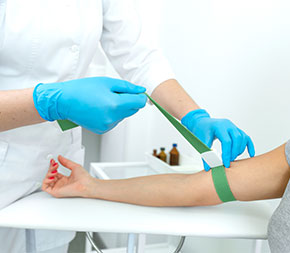The 10-Minute Rule for Northeast Medical Institute - New Haven Campus Phlebotomy Course & Cna Class
The 10-Minute Rule for Northeast Medical Institute - New Haven Campus Phlebotomy Course & Cna Class
Blog Article
Little Known Facts About Northeast Medical Institute - New Haven Campus Phlebotomy Course & Cna Class.
Table of Contents5 Simple Techniques For Northeast Medical Institute - New Haven Campus Phlebotomy Course & Cna ClassThe Northeast Medical Institute - New Haven Campus Phlebotomy Course & Cna Class IdeasThe Single Strategy To Use For Northeast Medical Institute - New Haven Campus Phlebotomy Course & Cna ClassHow Northeast Medical Institute - New Haven Campus Phlebotomy Course & Cna Class can Save You Time, Stress, and Money.Some Known Facts About Northeast Medical Institute - New Haven Campus Phlebotomy Course & Cna Class.The 5-Second Trick For Northeast Medical Institute - New Haven Campus Phlebotomy Course & Cna Class
The use of such devices should be accompanied by other infection avoidance and control techniques, and training in their usage. Not all security devices are appropriate to phlebotomy. Prior to picking a safety-engineered gadget, users must extensively explore offered gadgets to determine their appropriate usage, compatibility with existing phlebotomy methods, and effectiveness in safeguarding team and people (12, 33).For setups with reduced resources, expense is a driving aspect in purchase of safety-engineered devices. Where safety-engineered gadgets are not readily available, competent usage of a needle and syringe is acceptable.
One of the crucial markers of top quality of treatment in phlebotomy is the involvement and collaboration of the individual; this is mutually helpful to both the wellness employee and the person. Clear information either written or spoken should be available to every client that undertakes phlebotomy. Annex F gives sample message for explaining the blood-sampling procedure to a client. labelling); transport problems; analysis of results for scientific administration. In an outpatient division or center, give a devoted phlebotomy workstation containing: a clean surface with two chairs (one for the phlebotomist and the various other for the person); a hand clean basin with soap, running water and paper towels; alcohol hand rub. In the blood-sampling space for an outpatient division or center, offer a comfortable reclining couch with an arm rest.
Northeast Medical Institute - New Haven Campus Phlebotomy Course & Cna Class Things To Know Before You Get This
Ensure that the indicators for blood sampling are plainly specified, either in a composed method or in documented instructions (e.g. in a lab form). In any way times, comply with the approaches for infection prevention and control noted in Table 2.2. Infection avoidance and control methods. Accumulate all the equipment required for the treatment and location it within secure and easy reach on a tray or cart, making sure that all the items are plainly noticeable.
Where the client is grown-up and aware, adhere to the steps described below. Present yourself to the client, and ask the individual to mention their complete name. Check that the laboratory type matches the individual's identification (i.e. match the person's details with the lab type, to ensure accurate identification). Ask whether the patent has allergies, phobias or has ever fainted during previous injections or blood draws.
Make the person comfortable in a supine setting (if feasible). The client has a right to refuse a test at any kind of time prior to the blood tasting, so it is vital to make sure that the client has recognized the procedure - PCT Courses.
Not known Facts About Northeast Medical Institute - New Haven Campus Phlebotomy Course & Cna Class
Prolong the person's arm and examine the antecubital fossa or forearm. Situate a blood vessel of a good dimension that is noticeable, straight and clear. The diagram in Section 2.3, shows typical placements of the vessels, but numerous variations are possible. The median cubital vein lies between muscle mass and is typically one of the most very easy to penetrate.
DO NOT put the needle where blood vessels are diverting, because this enhances the possibility of a haematoma. The capillary must show up without using the tourniquet. Situating the blood vessel will certainly aid in identifying the appropriate size of needle. Apply the tourniquet about 45 finger widths over the venepuncture site and re-examine the capillary.
Samplings from central lines lug a danger of contamination or wrong lab test outcomes. It is acceptable, however not optimal, to attract blood specimens when initial introducing an in-dwelling venous tool, before attaching the cannula to the intravenous fluids.
Facts About Northeast Medical Institute - New Haven Campus Phlebotomy Course & Cna Class Uncovered
Failure to permit sufficient contact time boosts the threat of contamination. DO NOT touch the cleaned go right here website; in certain, DO NOT position a finger over the blood vessel to lead the shaft of the exposed needle.
Ask the client to form a clenched fist so the capillaries are much more popular. Enter the vein swiftly at a 30 degree angle or less, and remain to introduce the needle along the capillary at the easiest angle of entry - Phlebotomy Training. Once sufficient blood has been collected, launch the tourniquet BEFORE taking out the needle
Northeast Medical Institute - New Haven Campus Phlebotomy Course & Cna Class Fundamentals Explained
Withdraw the needle delicately and apply mild pressure to the website with a tidy gauze or dry cotton-wool round. Ask the client to hold the gauze or cotton woollen in location, with the arm extended and elevated. Ask the individual NOT to flex the arm, since doing so creates a haematoma.

How Northeast Medical Institute - New Haven Campus Phlebotomy Course & Cna Class can Save You Time, Stress, and Money.
Where feasible, maintain the tubes in a rack and relocate the shelf in the direction of you - https://visual.ly/users/gordonmarvin28/portfolio. If the example tube does not have a rubber stopper, inject incredibly slowly right into the tube as lessening the pressure and velocity made use of to transfer the sampling decreases the risk of haemolysis.

Report this page